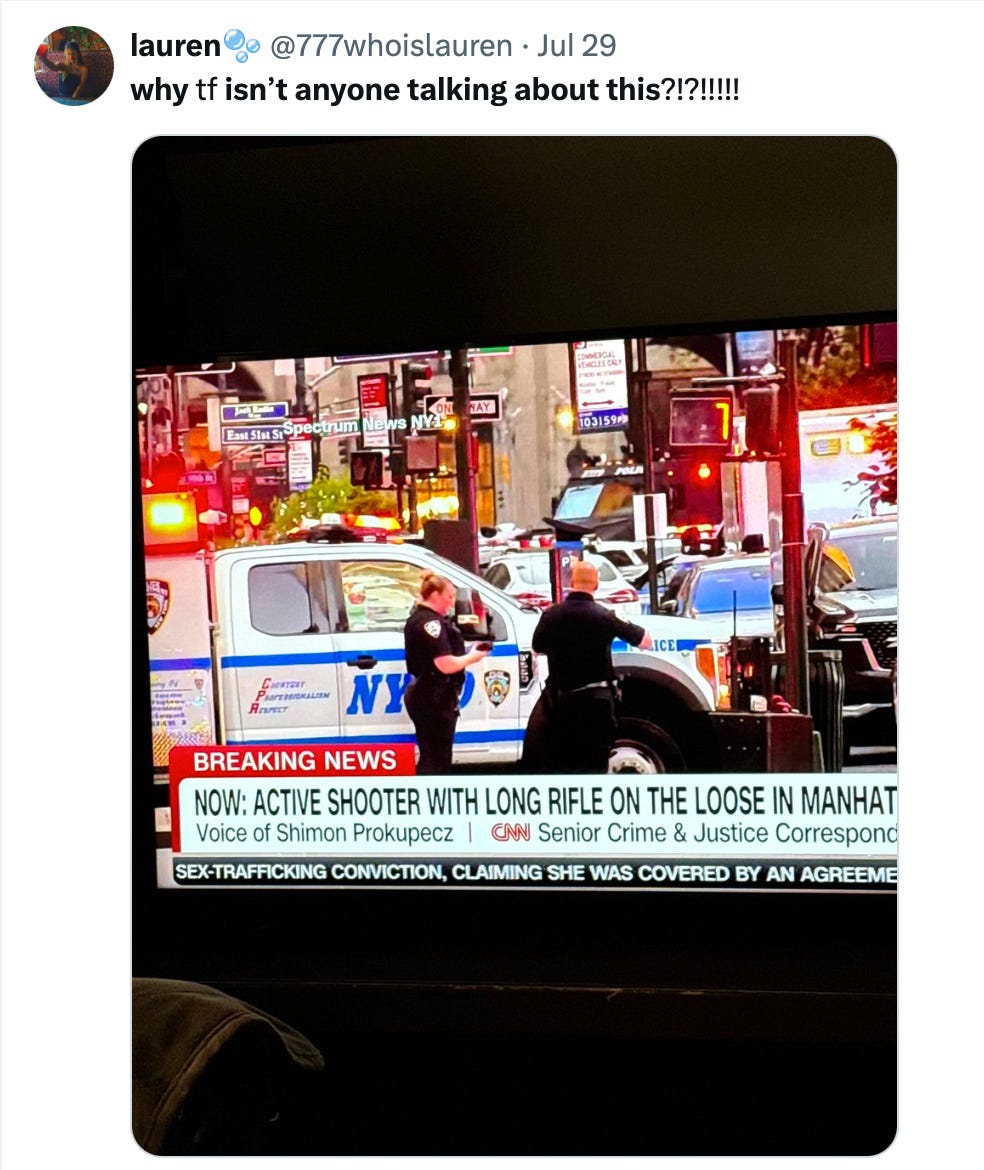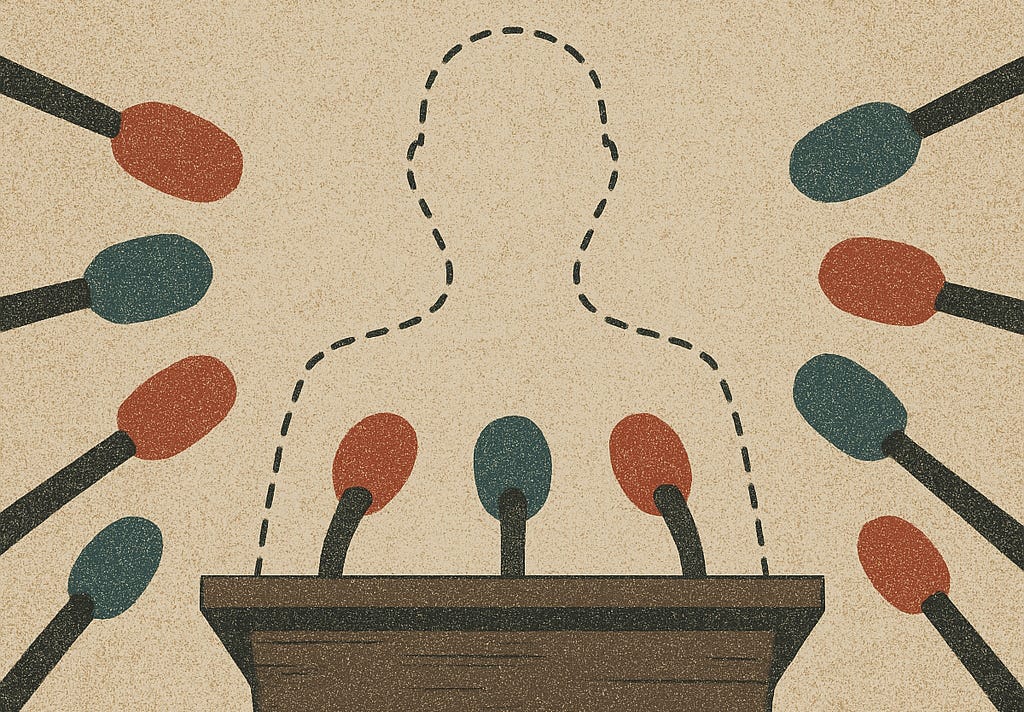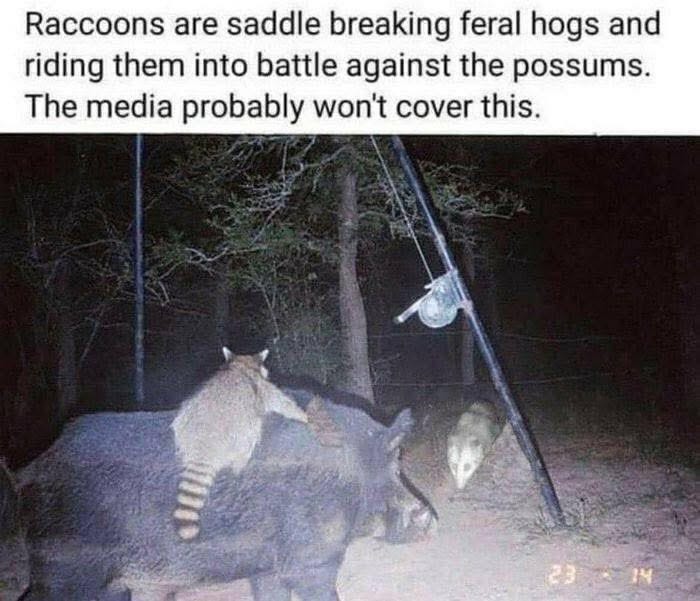Why is Nobody Talking About This?
Bias is not just how something is covered, but what is covered at all. – BCB #159
There is a certain irony in asking “why isn’t anyone talking about this?” with a screenshot of media coverage. Or, try this experiment: whenever someone complains about a lack of coverage, search Google News for stories. More often than not, major outlets will have something. So why do people so often feel that important topics are not covered? And what does this say about how we fight?

While claims that "no one is covering this” almost always turn out to be wrong, there’s no need to take this literally. What this really says is that the poster thinks something deserves more attention, and attention is perhaps the most valuable commodity in politics.
We will always have such complaints, for two reasons.
First, impossible for everything to make headlines at the same time. The world is far too vast; it was always an illusion that daily news coverage could tell you everything that matters.
Second, Red and Blue tend to live in different media realities. Algorithms do play a part in isolating us, though perhaps not as much as you think. There is a deeper problem in our media ecosystem: different outlets really do cover different stories, and audiences self-select by politics. Fortunately, this one is easily solvable — it helps to make a habit of getting information from people you disagree with, and there are even tools for that.
Not only do these different realities bias our opinion of what is and isn’t being covered, they bias our understanding of the actual state of the world. That’s bad for healthy conflict.
Big world, small filter
Every day, the world turns out staggering amounts of fresh media in all formats. There are roughly 500 million new posts on X every day. The GDELT global event monitoring system annotates between 100,000–200,000 news articles per day in 11 languages. A 2019 estimate suggested that YouTube was then ingesting an eye-watering 720,000 hours of video daily. American publishers alone average four million books a year or about 11,000 new books every single day.
Now ask yourself: how many articles do you read in a day? How much video do you watch, how many posts can you actually scroll through, and how often do you finish a book? Our information filters — be they human or algorithmic — are not just selective, they’re necessarily brutal. At best, they can only let through something like 1/10,000 of all news content and a mere 1/10,000,000 of all social media posts.
When someone says “the media should be covering this” what they usually mean is “this should appear in everyone’s daily dose of information.” That might be fair enough, but the much harder question is what other content should be dropped to make room. There’s just no free lunch here.
Different slant, different topics
The other problem is that different sources really do cover different topics. Because of of our aversion to listening to people who don’t share our politics, we self-isolate into separate information worlds.
A new study of nearly a decade of TV news transcripts reveals how America's information environment has quietly fractured into separate realities: while the big three broadcast networks (ABC, CBS, NBC) still cover similar topics in similar ways, cable news has become something entirely different. Fox News viewers now see a fundamentally different mix of stories than CNN or MSNBC viewers, with increasingly diverging language. This divergence appears not just in opinion shows, but even more in hard news programs.

This goes beyond partisan slant in coverage or framing – that happens too, but this is more fundamental. Different channels are literally covering different topics.
This matters because TV news still sets the agenda. While social media is an increasing percentage of Americans’ news diet, cable news is still a big deal. Around 63% of Americans rely on TV at least sometimes for their news intake, according to a 2024 study. During the study period, about 15% of Americans were consuming 8+ hours of partisan cable news monthly, usually from a single channel.
Other data confirms this split in coverage and framing. An analysis of the text on screen on Fox News broadcasts shows overwhelming focus on “gun control” when covering firearms. CNN and MSNBC run wider mixes: mass shootings, public safety, Second Amendment debates. An analysis by The Pudding corroborates this – partisan media doesn't just argue over what happened, it chooses entirely different subjects, labels, and emotional tones, right down to the level of word choice. When covering abortion, for instance, CNN emphasizes “abortion rights” while Fox focuses on “abortion laws.” Both are technically accurate and each invokes a different mental framework.
Another revealing moment was when Colin Kaepernick's protests dominated headlines. All networks covered the initial story, but data only Fox kept it in rotation for months afterward. Same protest, different timeline, different stakes.
WhenAmericans tune into fundamentally different channels, they develop different memories. Take the Harris border coverage during her 2024 campaign as an example. Right-leaning outlets mentioned Harris and immigration in 7.5% of all stories – roughly one in four Harris articles. Left-leaning outlets were barely 1-2%. If you consumed primarily left media, you'd genuinely believe her border record was being ignored. Right media consumers would think it was the only thing anyone cared about. Both sides are only partly right, and both side's priorities became invisible to the other.
Ignoring what the other side values
The stories one side amplifies early can turn out to matter a lot. Crime is a great example. Initially dismissed as simply an artifact of Covid that was being exaggerated by Fox News, it's now apparent that the spike in violent crime lasted several years and voters care deeply about it.
The same pattern happened with border security concerns and educational controversies around race. The Liberal Patriot calls this the “Fox News Fallacy” – the idea that if Fox News criticizes Democrats for X then the real issue must be absolutely nothing to do with X — and the same can be said in reverse for MSNBC and Republicans. This fallacy blinds people to legitimate concerns simply because they first appeared in partisan media. The problem is that an issue is not necessarily invalid just because Fox News or MSNBC mentions it. That depends on the issue. If there is something to the topic and persuadable voters have real concerns, you will not allay those concerns by embracing the Fox News Fallacy. In fact, you'll probably intensify them by giving such voters the impression that you simply don't care about their concerns and will do nothing to address them.
How this breaks democracy
This divergence in media worlds creates a peculiar form of political frustration, where the systematic selection of which stories to cover and for how long is nearly invisible to consumers. You can't fact-check a story that never appears in your feed. You can't develop nuanced views on issues your preferred sources consistently ignore. Most importantly, you can't have productive conversations with people who have been presented with a completely different set of issues.
While partisan audiences do self-select biased sources, news production itself has become systematically different across partisan lines, with very few outlets covering everything of interest to all sides. The supply of information has fractured, not just the demand.
The solution isn't eliminating partisan media, because diverse perspectives have value. But we need tools to see beyond our own filters. Tangle covers the news of the day from both a left and right perspective. Ground News's Blindspot tracker shows in real time what stories are being covered heavily on one side but ignored on the other. MediaCloud reveals which outlets amplify which narratives and when.
Most of us would benefit from checking: What are the other guys saying? You don’t need to agree with it, but do you need to understand which conversations you're not seeing. Because if nobody's talking about it in your world, chances are someone’s talking about it somewhere else.
Image of the Week
– @rothmus





Very good. But very obvious. Don’t see how it is fixable. The culture or society or whatever you want to call it is fractured. Humpty Dumpty
I didn't recall hearing anything about this crime spike, so I clicked through to your source. The graph at the top tells me that murders were up by nearly 50%, at peak, from a 2019 baseline - and the graph only goes back to 2018. IIRC, violent crime of all sorts was much higher in my youth, and is overall much lower today. A graph of murders - dating back to e.g. 1960 - would probably show this clearly. I don't *know*, but I suspect the 2022 peak of (reported) murders wouldn't approach the 1960 numbers, if the graph went back this far.
FWIW, this is classic media recency bias. I lose count of headlines like "last Tuesday we hit the peak of X ... since the beginning of last year". Usually the second clause is in the article text, not the clickbait heading.
Most likely, this site simply doesn't have data before 2018, not in an attempt to produce scary results, but because that's when they started recording. But I'd love to see farther detail (from BCB?) about how this recent spike compares with data from the last 60 to 100 years.
Other than that, I guess my experience demonstrates your point. I've been following the news much more in the past decade than before that - now to the point of checking the AP morning news summary 6 days a week (it doesn't come out on Saturdays), and my preferred newspaper most mornings - and I was unaware of this claim, let alone any limits to its validity.